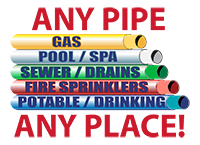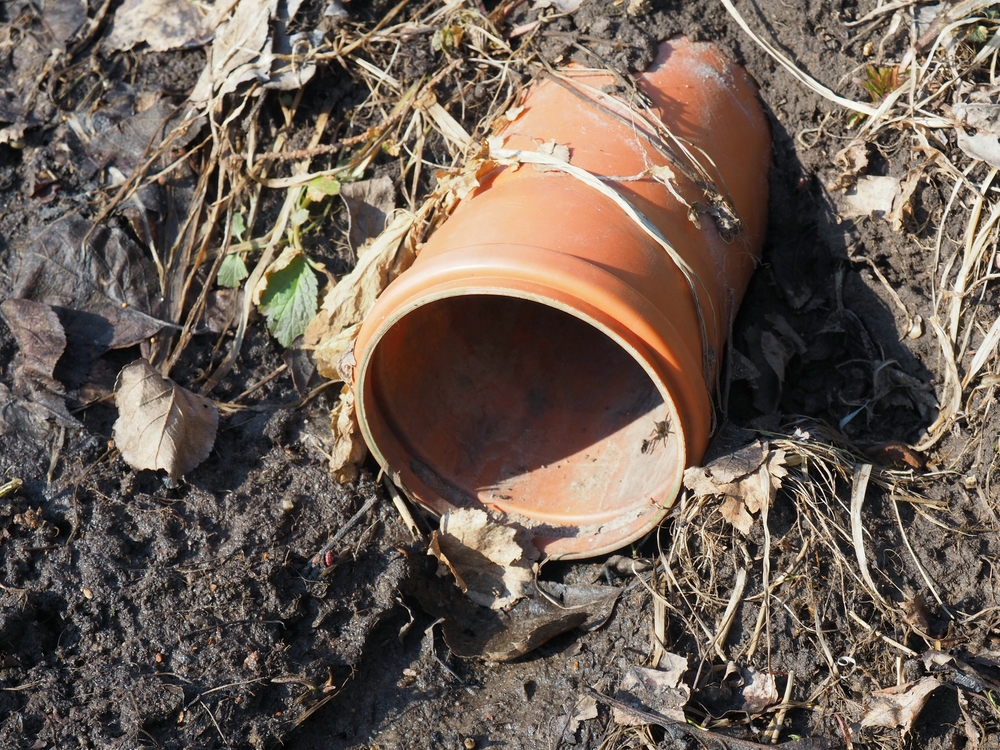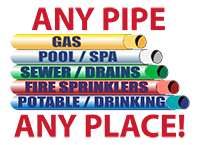Sewers are an essential part of our infrastructure, but they are often taken for granted. That is until they back up and cause a nasty mess. Then we all realize how important they are and how much we rely on them.
What is Sewer Pipe Lining?
Sewer pipe lining is a process used to repair and rehabilitate existing sewer lines without having to dig them up and replace them. This process involves inserting a flexible, inflatable liner into the existing sewer pipe and then inflating it. The liner conforms to the shape of the existing pipe and creates a new pipe within the old one. Sewer pipe lining can be used to repair pipes that are cracked, broken, root-infested, or otherwise in need of repair. It can also be used to increase the diameter of an existing pipe.
Sewer pipe lining is typically made of epoxy, although sewer pipes are generally made of other materials such as concrete, PVC, etc. The lining is used to create a smooth inner surface for the pipe, which helps to prevent blockages and makes it easier for sewage to flow through.
Sewer Pipes are Prone to Damage
There are many ways that sewer pipes can become damaged. Some of the most common include:
- Tree roots: Tree roots are one of the most common causes of sewer pipe damage. As trees grow, their roots spread out in search of water and nutrients. If they happen to grow into a sewer pipe, they can cause cracks and blockages.
- Ground movement: Sewer pipes are usually buried underground. Over time, the ground can shift and move, which can cause the pipes to crack or break.
- Corrosion: Over time, sewer pipes can corrode, especially if they’re made of metal. This can cause them to leak or even collapse.
- Incorrect installation: If sewer pipes are not installed properly, they can be more susceptible to damage. This is why it’s important to hire a professional for any sewer pipe installation or repair.
- Poor maintenance: If sewer pipes are not properly maintained, they can become clogged or damaged. It’s important to have them cleaned and inspected on a regular basis to prevent any problems.
Not sure if a lining is what your sewer pipe needs?
There are a few ways to check if your sewer pipes need a lining. You should try to get in touch with a plumber at the first instance of noticing any of these abnormalities as the situation may quickly escalate. A plumbing professional may be able to stop the damage in the beginning stages itself – keeping you from having to spend a pretty penny down the line.
First, look for any visible cracks or holes in the pipe. If you see any, it’s likely that the pipe is in need of repair. Second, check for any leaks in the pipe. If you see any, it’s likely that the pipe is in need of repair. Finally, check for any blockages in the pipe. If you see any, it’s likely that the pipe is in need of repair.
Things to Consider Before you Make a Decision
Sewer pipe lining is a trenchless method of repairing existing sewer lines. This process is less disruptive and less expensive than traditional sewer repair methods, but there are still some factors to consider before having it done.
Here are some things to keep in mind before installing a sewer pipe lining:
- The condition of the existing pipe: In order for pipe lining to be effective, the existing pipe must be in generally good condition. If the pipe is severely damaged or deteriorated, it may be better to just replace it entirely.
- The type of pipe: Sewer pipe lining can be used on most types of sewer pipes, but not all. Make sure to check with your pipe lining contractor to see if your pipe is compatible.
- The size of the pipe: The size of the pipe is important for two reasons. First, the liner must be able to fit inside the pipe. Second, the size of the pipe will determine the amount of time it takes to complete the lining process.
- Access to the pipe: In order to get to the pipe to line it, there must be enough access. This means that the pipe must be exposed and there must be enough room to work.
- The ground around the pipe: The ground around the pipe must be stable enough to support the equipment needed for pipe lining. If the ground is too soft or unstable, it could cause problems during the installation process.
- The weather: The weather can impact the pipe lining process in a number of ways. Extreme cold or heat can make the installation process more difficult, and rain can delay or even cancel the process altogether.
- The location of the pipe: The location of the pipe is also important to consider. If the pipe is located in a difficult-to-reach place, it may be more difficult to install the liner.
- The cost: The cost of pipe lining will vary depending on a number of factors. These include the size of the pipe, the condition of the existing pipe, the type of pipe, the location of the pipe, and the company you hire to do the work.
- The warranty: Most pipe lining companies will offer a warranty on their work. Make sure to ask about the warranty before having the work done.
- Your needs: Finally, make sure to consider your own needs when deciding whether or not to have pipe lining done. If you have a severe problem with your sewer pipe, it may be best to just replace the pipe entirely. However, if your pipe is only slightly damaged, pipe lining may be the best option.
Again, it is advised that you seek professional opinion and decide accordingly.
Let’s Talk Money
There are many factors that determine the cost of sewer pipe lining.
- The type of pipe,
- the size of the pipe,
- the length of the pipe,
- the depth of the pipe,
- the soil type, the climate,
- and the amount of groundwater are just a few of the things that can affect the price.
In addition, the company you choose to do the work, the quality of the materials they use, and the experience of the workers can also affect the cost. It is better to contact a plumbing company to get a rough estimate of their prices. The plumbers will also tell you the approximate amount when they finish their inspection and get ready to work on fixing the sewer pipe.
The cost of sewer pipe lining can vary depending on a few factors, but the average cost is around $50 to $150 per linear foot. The main factor that will affect the cost of sewer pipe lining is the condition of your sewer pipe. If your sewer pipe is in good condition, it will likely only need a simple liner. However, if your sewer pipe is in bad condition, it may need a more expensive liner.
Be Ready for Additional Costs
There can be a number of additional costs associated with getting a sewer pipe lining that homeowners should be aware of. These can include the cost of having the initial assessment done, as well as the cost of any repairs that may be necessary prior to the lining being installed. Additionally, there may be a fee for the removal of any tree roots or other debris that is blocking the pipe, and the cost of the actual lining itself. Homeowners should also be prepared for the possibility of having to pay for additional repairs down the line, as the lining may not last forever.
How It’s Done
Sewer pipe lining is minimally invasive when compared to other forms of sewer replacements or repair work. Here’s a brief overview of how your plumbing contractor will get the job done:
- The first step is to insert a camera into the pipe to inspect it and determine the best course of action.
- Second, the sewer pipe is cleaned out. This is done with a hydro jet, which flushes out the debris and cleans the walls of the pipe. However, depending on the situation and the condition of the pipe, the first and second steps may also be interchanged.
- If the pipe is determined to be a good candidate for a pipe lining, the next step is to insert a liner into the pipe.
- The liner is then inflated and left in place to cure.
- Once the liner has cured, it is trimmed to fit the pipe and the ends are sealed.
- The final step is to test the pipe to ensure that it is functioning properly.
Benefits of Sewer Pipe Lining
By now you know that sewer pipe lining is a process of repairing damaged or broken sewer pipes by relining them with a new pipe. This process can extend the life of your sewer system by decades. There are several other benefits of sewer pipe lining as well, including:
-
Reduced Infiltration and Inflow
One of the main benefits of sewer pipe lining is that it can help to reduce infiltration and inflow (I&I). I&I is water that enters the sewer system from sources other than the toilets, sinks, and showers in your home or business. This extra water can overload the system and cause sewage to back up into homes and businesses, or even overflow into streets and waterways. By reducing I&I, sewer pipe lining can help to keep your sewer system functioning properly.
-
Fewer Repair and Maintenance Costs
Sewer pipe lining can also help to reduce the need for future repairs and maintenance. By repairing damaged pipes and preventing new damage, sewer pipe lining can extend the life of your sewer system. This can save you money on repair and maintenance costs over time.
-
Less Disruption to Your Home or Business
Another benefit of sewer pipe lining is that it is less disruptive than traditional repair methods. Sewer pipe lining can be completed without excavating your property, so you won’t have to worry about the disruption and cost of repairs. This means that you can keep your business open and your home livable during repairs.
-
Improved Flow and Capacity
Sewer pipe lining can also improve the flow and capacity of your sewer system. By repairing damaged pipes and increasing the diameter of pipes, sewer pipe lining can improve the flow of sewage through your system. This can help to prevent sewage backups and overflows.
-
Environmentally Friendly
Sewer pipe lining is also an environmentally friendly repair option. By avoiding excavation, sewer pipe lining can save trees, reduce soil erosion, and protect groundwater. In addition, the material used to line pipes is safe for the environment and won’t leach chemicals into the soil or water.
If you’re considering sewer pipe repair, sewer pipe lining is a great option. This repair method is less expensive and disruptive than traditional methods.
It’s Best to Leave this Work to the Professionals
As fun as DIY-ing is, some things are better off left in professional hands. When it comes to keeping sewers healthy, plumbers play a vital role. By ensuring that sewer lines are properly installed and maintained, plumbers can help keep sewers functioning properly and prevent backups and overflows.
Sewer lines can become clogged with grease, hair, soap scum, and other debris. If these clogs are not removed, they can eventually cause the sewer line to back up or overflow. Plumbing companies have the tools and training to clear these clogs quickly and efficiently, helping to keep sewers healthy.
In addition to clearing clogs, plumbers can also perform routine maintenance on sewer lines. This maintenance can help to prevent problems before they start and can keep sewers functioning properly for years to come.
If you are having problems with your sewer line, or if you would like to have it inspected, cleaned, or maintained, contact a trusted plumbing contractor. Plumbers are the experts at keeping sewers healthy and functioning properly.







